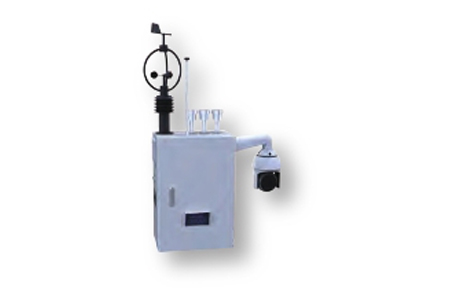How to Measure Air Pollution?
(2021年)http://www.zetian-group.com/products/continuous-emission-monitoring-process-control/
HANGZHOU ZETIAN TECHNOLOGY CO., LTD ,cems analyzer manufacturers,was established in 2008, and has national wide impact in China now as a fast-growing company specialized in environmental pollution monitoring and industrial process control. Our instruments and emission analyzers can be customized by our professional staff who understand your compliance testing needs and provide you best solutions. We focus on Ultra-violet DOAS gas analyzer, Laser TDLAS gas analyzer, continuous emission monitoring system, etc, basically covering air pollution monitoring, metallurgical industries, chemical, refinery industries, cement, sulfur recovery, flue gas and other online air quality monitor needs. We also provide water quality testing. Our friendly and professional staff are always ready to provide technical support to our customers.
There are many pollutions in the air, such as SO2, vehicle exhaust, PM, etc., which are harmful to human beings. So, it's of great necessity to have real time supervision on air pollution, usually using air pollution analyzer to test. Air pollution analyzer is rich in types based on the monitoring material. The below will introduce the working principle of SO2 analyzer, vehicle exhaust inspection equipment and PM monitor so that everyone can know how it measures air pollution.
1. Continuous emission monitoring system working principle of SO2 analyzer
Combined with micro process technology, SO2 analyzer adopts UV fluorescence to provide accurate and reliable SO2 detection in low concentration ppb~ppm, which can be applied in air monitoring and delamination CEMS.
The principle of measuring SO2 is the molecules absorb energy from UV light, returning from high level to ground state, and fluoresce when UV around 220nm shines on SO2. The fluorescence intensity reflects the concentration of SO2. When the UV light intensity is constant at 220nm, the content of SO2 in the measured gas medium can be calculated by measuring the fluorescence intensity. This method can transport the gas medium for a long distance, without heating and heat preservation, easy to maintain and control. The key point of the technology is how to ensure the constant ultraviolet light intensity of 220nm, in addition, to prevent dust blockage and change in the balance release ratio.
2. Working principle of vehicle exhaust inspection equipment
Vehicle inspection equipment makes use of remote sensing technology for supervision.
Monitoring by remote sensing of vehicle exhaust belongs to laboratory spectroscopy technology which is also called long path absorption spectroscopy. It can monitor the pollutants from vehicle emissions on the road. The working principle is sending ultraviolet and infrared light to optical mirror which will reflect to the detector across the road through light source. The cars have to go through these lights while driving on the road. Since the vehicle exhaust absorbs light, changing transmission light intensity, it can be monitored through the light intensity changes in inspection equipment, especially the concentration of oxynitride, hydrocarbon and CO.
3. Working principle of PM monitor
The principle of PM monitor is based on atmospheric particulate concentration technology and β-ray attenuation method. The monitor concentrates PM with aerodynamic equivalent diameter less than 2.5/10μm on rolling membrane filter. Taken low radiation 14C as active source, β-ray from the monitor goes through the polluted filter and received by the detector. PM measuring device, consisting of photomultiplier, plastic scintillator and counter, offers quantitative analysis on enrichment thickness of through β-ray from PM measuring system to calculate the PM2.5/10 in the air.

- このできごとのURL:


コメント